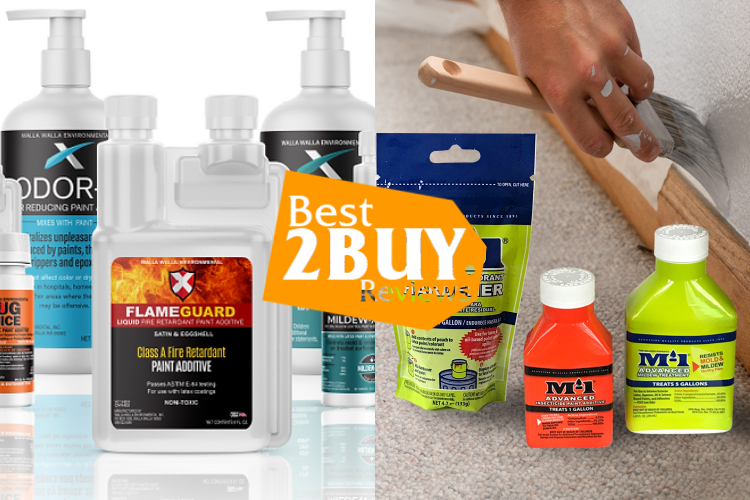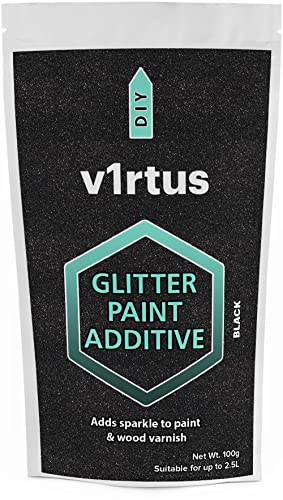Enhancing Your Palette: A Comprehensive Guide to Paint Additives

- 1. Enhancing Your Palette: A Comprehensive Guide to Paint Additives
- 1.1. What Are Paint Additives?
- 1.2. Types of Paint Additives
- 1.2.1. Extenders
- 1.2.2. Thickeners
- 1.2.3. Drying Retarders
- 1.2.4. Antifreeze Agents
- 1.2.5. Anti-Skinning Agents
- 1.2.6. Mold and Mildew Inhibitors
- 1.2.7. UV Absorbers
- 1.2.8. Adhesion Promoters
- 1.3. Applications and Benefits
- 1.4. Factors To Consider When Choosing Paint Additives
- 1.4.1. Paint Type
- 1.4.2. Surface and Environment
- 1.4.3. Purpose of the Additive
- 1.4.4. Compatibility
- 1.4.5. Application Method
- 1.4.6. Drying Time
- 1.4.7. Color and Sheen
- 1.4.8. Health and Safety
- 1.4.9. Manufacturer's Recommendations
- 1.5. Conclusion
Paint additives are revolutionary substances that can revolutionize our approach to painting endeavors. Whether you're an experienced artist, a dedicated DIY enthusiast, or a skilled professional painter, these additives provide a wide array of advantages. They range from enhancing performance and durability to elevating aesthetic appeal. In this article, we will explore the realm of paint additives, examining their various types, applications, and the myriad benefits they offer.
What Are Paint Additives?
Paint additives are substances that are added to paint formulations to enhance or modify their properties. These additives serve various purposes and can improve characteristics such as adhesion, durability, color, texture, and performance. Different types of paint additives are available, each designed to address specific requirements.
Types of Paint Additives
Extenders
Extenders are indispensable additives designed to increase the volume of paint without compromising its quality. They contribute to better coverage, making the paint go further. Common extenders include calcium carbonate and talc. These additives not only stretch the paint but also maintain its integrity, ensuring a consistent finish.
Thickeners
Thickeners play a crucial role in enhancing the viscosity of paint, providing better control during application. This is especially useful for vertical surfaces, preventing drips and ensuring an even coat. Bentonite and cellulose are examples of thickeners that contribute to the paint's texture and make it easier to work with.
Drying Retarders
For artists and craftsmen seeking extended working periods, drying retarders are a valuable addition to their toolkit. These additives slow down the drying time of paint, allowing for more intricate designs or work in high-temperature environments. Glycerin and certain types of oils are commonly used as drying retarders, providing flexibility in the creative process.
Antifreeze Agents
In colder climates, paint can pose challenges as it thickens and becomes difficult to apply. Antifreeze agents come to the rescue by lowering the freezing point of the paint. This ensures smooth application even in colder temperatures, making them essential for outdoor projects in winter or in regions with chilly climates.
Anti-Skinning Agents
Over time, paint cans are prone to developing a skin or film on the surface, rendering the remaining paint less usable. Anti-skinning agents act as preservatives, forming a protective layer that prevents the paint from drying out and maintains its quality. This ensures that the paint in the can is as vibrant and usable as the day it was purchased.
Mold and Mildew Inhibitors
In environments characterized by high humidity and moisture levels, mold and mildew can compromise the integrity of painted surfaces. Mold and mildew inhibitors, often containing fungicides and antimicrobial agents, help prevent the growth of these unwanted elements. This is particularly crucial for areas such as bathrooms and kitchens where moisture is prevalent.
UV Absorbers
Exposure to sunlight can cause fading and degradation of paint over time. UV absorbers play a vital role in mitigating this effect by absorbing ultraviolet light. By doing so, they extend the life and vibrancy of the paint, making them a valuable addition for outdoor applications and surfaces exposed to sunlight.
Adhesion Promoters
Ensuring that paint adheres well to various surfaces is essential for durability and longevity. Adhesion promoters are additives that enhance the bonding of paint to surfaces, addressing the challenge of difficult materials like plastic or metal. This promotes a stronger bond, resulting in a more resilient and long-lasting finish.
Applications and Benefits
- Artistic Endeavors: Artists can use additives to modify the texture, drying time, and finish of their paints, enabling greater creativity and control over their artwork.
- Architectural Painting: In the construction industry, additives contribute to better coverage, weather resistance, and overall paint performance, especially in challenging exterior environments.
- Industrial Coatings: In manufacturing and industrial settings, paint additives play a crucial role in improving adhesion, corrosion resistance, and overall coating durability.
- DIY Home Projects: DIY enthusiasts can benefit from additives that make paint easier to work with, reducing the likelihood of mistakes and ensuring a more professional finish.
Factors To Consider When Choosing Paint Additives
Choosing the right paint additives is crucial for achieving the desired finish and performance of your paint project. With a wide range of additives available in the market, it's important to consider various factors before making a selection. This article will guide you through the key factors to consider when choosing paint additives.
Paint Type
Different paint formulations require specific additives. Water-based paints may need different additives than oil-based ones. Ensure compatibility between the paint and the chosen additive to avoid adverse reactions or reduced effectiveness.
Surface and Environment
Consider the surface you are painting and the environmental conditions it will be exposed to. Exterior paints may require additives that offer UV protection and resistance to harsh weather, while interior paints might benefit from additives that resist mold and mildew growth.
Purpose of the Additive
Clearly define the purpose of adding an additive to your paint. Common purposes include improving adhesion, preventing corrosion, enhancing drying time, or adding texture. Choose additives that specifically address the challenges you anticipate in your painting project.
Compatibility
Ensure that the chosen additives are compatible not only with the paint but also with other additives if you plan to use multiple. Incompatible additives can result in clumping, separation, or a compromised finish.
Application Method
Consider the method of application, whether it's brushing, rolling, or spraying. Some additives may affect the viscosity of the paint, making it more suitable for certain application techniques. Always follow the manufacturer's recommendations for the best results.
Drying Time
If you have specific time constraints or want to speed up the drying process, look for additives that accelerate drying time. On the other hand, if you're working on a project that requires extended working time, there are additives designed to slow down the drying process.
Color and Sheen
Some additives can impact the color and sheen of the paint. If maintaining the original color and sheen is crucial, choose additives that are formulated to be transparent or have minimal impact on the paint's appearance.
Health and Safety
Consider the health and safety implications of the additives, especially if you are working in an enclosed space. Some additives may emit fumes or require additional safety precautions, so always read and follow the safety guidelines provided by the manufacturer.
Manufacturer's Recommendations
Always refer to the manufacturer's guidelines and recommendations for both the paint and the additives. Following these instructions ensures that you achieve the desired results and maintain the integrity of the paint.
Conclusion
The realm of painting has undergone a revolutionary transformation thanks to the advent of paint additives. These additives present a myriad of solutions catering to artists, homeowners, and professionals alike. Through a comprehensive grasp of the various types of additives and their specific applications, individuals can make knowledgeable decisions to elevate the excellence, longevity, and visual allure of their painting endeavors. Whether one seeks cost-effective coverage with extenders or aims to safeguard sun-exposed surfaces with UV absorbers, the utilization of paint additives unveils a spectrum of possibilities for attaining an impeccable finish.











